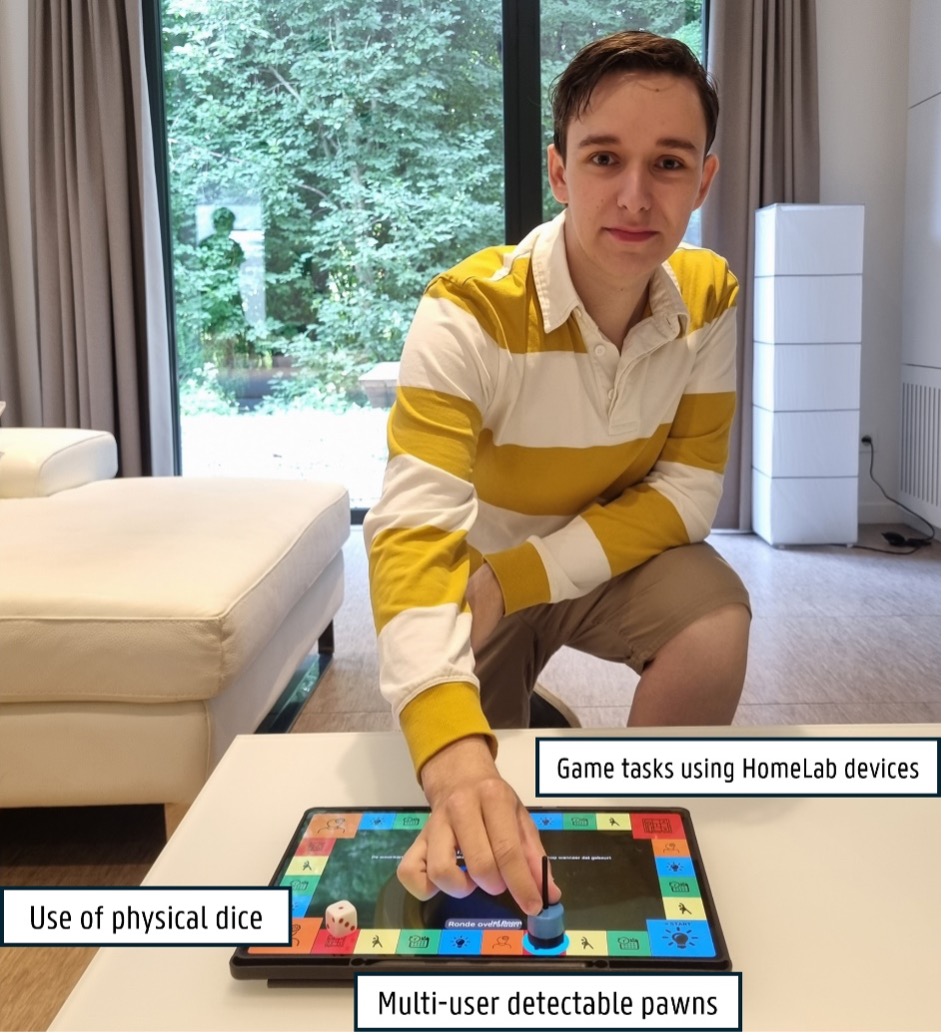29/05/2024 Using IoT environments in gamified cognitive and physical training of elderly people
The result is a platform for future research, implementing core systems for user management & data sharing, accessibility customization, online and local multiplayer and custom-tailored questions shared by family members or caregivers. Game tasks using smart home integrations can include activities such as reaction speed tests, tasks that require interaction with smart devices, and memory challenges like recalling the last time you cooked.
To improve the game's tactility and introduce a new measurement point for analysis, physical pawns were designed using a conductive 3D printing material, ensuring low-cost production. Multi-user detection is achieved through distinct pawn bases. Additionally, commercial BLE dice are supported. These features, along with the smart integrations, are optional and can be activated on a per-device basis, allowing for multiplayer interaction with any user.
The platform was integrated with the HomeLab home automation system via the open source OpenHab software, allowing direct interactions with the smart home environment. Think of detecting which lights were turned on or going to a certain location within the house as fast as possible.
The thesis laid the groundwork allowing future researchers to focus on gathering analytical data during tests with real end users, and the extension of smart home platforms such as OpenHab, with more extensive semantic data models. This would allow for a more accurate recognition of a home's capabilities and, consequently, more sophisticated integrations and tasks a user can be given
